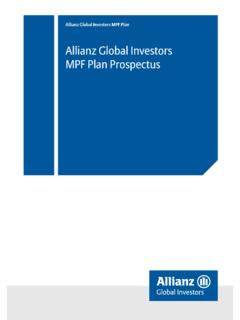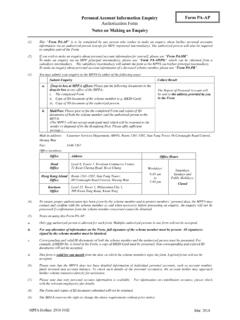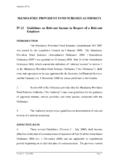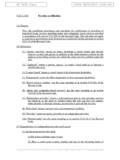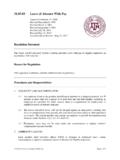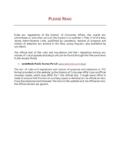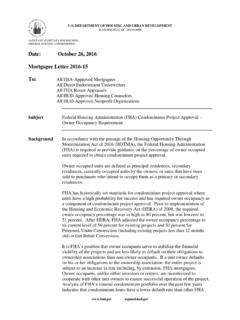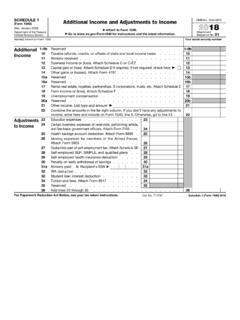Transcription of A 10-year Investment Performance Review of - MPFA
1 A 10-year Investment Performance Review of the MPF System (1 December 2000 31 December 2010). Acknowledgement The methodology and analysis of this report have been reviewed by Prof Kalok Chan, Synergis-Geoffrey Yeh Professor of Finance and Head of Department of Finance, The Hong Kong University of Science and Technology. The Mandatory Provident Fund Schemes Authority would like to thank Prof Kalok Chan for his advice and assistance in preparation of the report. _____. This report is compiled by the Policy Development and Research Department of the Mandatory Provident Fund Schemes Authority for general reference only. The findings, interpretations and conclusions expressed in this report are general in nature and do not take into account the personal circumstances of any person. While every effort has been made to ensure accuracy, the Authority shall not be liable for any errors or omissions in or any reliance placed upon this report.
2 Past Performance is not necessarily indicative of future Performance . Individuals are advised to obtain independent advice before making decisions in relation to their MPF. investments. A 10-year Investment Performance Review of the MPF System TABLE OF CONTENTS. EXECUTIVE SUMMARY .. i CHAPTER 1 INTRODUCTION .. 1. Objectives .. 1. Scope .. 1. Methodology .. 3. Data Sources .. 5. CHAPTER 2 Performance OF THE MPF SYSTEM AS A WHOLE .. 6. CHAPTER 3 Performance OF DIFFERENT TYPES OF MPF 9. CHAPTER 4 RELATIONSHIP BETWEEN RISK AND RETURN .. 15. CHAPTER 5 IMPLICATIONS .. 18. Appendix A Features and Categorization of Different Types of MPF Funds .. 23. Appendix B Methodology Calculation of Return .. 26. Appendix C Methodology Risk Measurement .. 29. Mandatory Provident Fund Schemes Authority A 10-year Investment Performance Review of the MPF System EXECUTIVE SUMMARY. 1. This report is prepared to Review the Investment Performance of the Mandatory Provident Fund ( MPF ) System for the period from the commencement of the MPF System on 1.
3 December 2000 to 31 December 2010 (the Review ).1 The Review aims to provide scheme members ( members ) and other stakeholders with a better understanding of the Investment Performance of the MPF System and different types of MPF funds over a 10-year period. All figures on return or Performance in this report are net of ( after deducting) fees and charges. KEY FINDINGS. Performance of the MPF System as a Whole 2. From 1 December 2000 to 31 December 2010, a total net amount of HK$ billion was contributed to the MPF System. As of 31 December 2010, those total net contributions had grown to HK$ billion of accrued benefits. This means that Investment returns had added HK$ billion to the net contributions of members. 3. As a whole, the MPF System recorded an annualized return of over the 10-year period after fees and The yearly Performance of the MPF system, as driven by corresponding changes in underlying Investment markets, fluctuated during the Review period, ranging from a negative annualized return of to a positive annualized return of 4.
4 It should however be noted that the return figures are System-wide figures. Individual members' MPF accounts will have displayed returns in excess of or lower than the MPF. System as a whole, depending primarily on their choice of fund and the timing of their contributions. Performance of Different Types of MPF Funds 5. A total of 479 MPF constituent funds ( MPF funds ), which had operated in the MPF. System at any point in time during the 10-year period, were included in the Review . Funds have been categorized under one of six types, namely, equity funds, mixed assets funds, bond funds, guaranteed funds, MPF conservative funds and money market funds &. others. 1. Specifically, the Review covers a period of 10 years and one month. 2. The return of the MPF System was calculated by way of the internal rate of return ( IRR ), a method commonly known as dollar-weighted return. The IRR method takes into account the amount and timing of contributions into and benefit withdrawals from the MPF System.
5 For details on calculation methodology, please refer to Appendix B. Mandatory Provident Fund Schemes Authority i A 10-year Investment Performance Review of the MPF System 6. All six types of funds added value to contributions over the 10-year period. As a group, equity funds, mixed assets funds and bond funds were the top performers, producing annualized returns of , and respectively for the 10-year period. At the other end of the spectrum were guaranteed funds, MPF conservative funds and money market funds & others which generated annualized returns of , and 7. For equity funds, consistent with underlying equity markets, the Performance varied considerably depending on the geographical allocation of assets. Of all equity funds, the best performing sub-category was Asia equity funds, followed by Hong Kong equity funds, Global equity funds, Europe equity funds and North America equity funds.
6 8. Within mixed assets funds, the fund Performance varied depending substantially on the percentage of equity content. For bond funds, Global bond funds outperformed Hong Kong bond funds. 9. MPF conservative funds achieved returns lower than other fund types as would be expected given the types of underlying assets. Returns of MPF conservative funds were however higher than the Hong Kong dollar savings rate4 and the growth of the Consumer Price Index over the Review period. Relationship between Risk and Return 10. The risk level of MPF funds was examined by measuring the standard deviation of monthly returns. Measured on this basis, of the six types of MPF funds, equity funds had the highest level of risk, followed by mixed assets funds, bond funds, guaranteed funds, money market funds & others and MPF conservative funds. 11. The Review also examined the risk level by measuring the range of monthly returns ( range ) generated over a period of time.
7 On this basis, equity funds again had the highest level of risk, while MPF conservative funds had the lowest. The results were similar to those based on the analysis of standard deviation. 3. In view of the absence of available data on contributions into and benefit withdrawals from MPF funds, the returns of different types of MPF funds were calculated by way of the time-weighted method instead of the dollar-weighted method. The time-weighted method takes into account the unit price of each MPF fund and its asset size relative to the aggregate asset size of all MPF funds of the same fund type at different points in time. For details on calculation methodology, please refer to Appendix B. 4. Hong Kong dollar savings rate is measured by the Prescribed Savings Rate for MPF conservative fund. Prescribed Savings Rate for MPF conservative fund is the rate at which interest is payable by the three note-issuing banks in Hong Kong in respect of a Hong Kong dollar savings account with deposit amount of HK$120,000.
8 Where different banks may pay interest on Hong Kong dollar savings accounts at different rates, the Prescribed Savings Rate for MPF conservative fund is the simple average of the interest rates offered for deposit amount of HK$120,000 by these banks. ii Mandatory Provident Fund Schemes Authority A 10-year Investment Performance Review of the MPF System IMPLICATIONS. Positive Overall Returns Generated for MPF Members 12. The Review suggests that the MPF System has generally added value to members'. contributions since its launch. Despite the fluctuations of the global economy and financial markets, the MPF System boosted the accrued benefits of its members by an annualized return of each year over the 10-year period. Strong Relationship between Risk and Return 13. The Review suggests that MPF funds had generally exhibited the expected relationship between risk and return, namely, the higher the potential return in the long run, the higher the risk.
9 Saving Outcome Hinges on Members' Investment Decision 14. Under the MPF System, all members can choose between MPF funds in the scheme in which they are enrolled. The Review indicates that fund choice made by members will have an important impact on their saving outcomes, and accordingly, the overall return of the MPF System. For instance, over the 10-year period, the cumulative return of equity funds amounted to , while that of the MPF conservative funds was only. Expressed in another way, equity funds returned, on average, almost six times as much as MPF conservative funds over the Review period. These return figures however have to be understood in the context of associated risk levels. Equity funds had the highest level of risk with range of monthly returns as wide as in the 10-year period, while MPF. conservative funds had a range as narrow as MPF Returns Should be Considered over the Long Term 15.
10 The results of the Review suggest that members should take a long-term view when looking at their MPF investments and, depending on the timing of their need to access accrued benefits, they should not be overly concerned with short-term return fluctuations. Despite the repercussions of significant financial market volatility during the Review period, including the global financial crisis in late 2008 to early 2009, the MPF System was able to weather the storm and add value to members' contributions over the 10-year period. Mandatory Provident Fund Schemes Authority iii A 10-year Investment Performance Review of the MPF System 16. The return of MPF Investment is characterized by the compounding effect in which reinvesting earnings ( dividends, interest and/or capital gains) over time can lead to potentially larger increases in value. Therefore, members can expect that the power of the compounding effect will be more pronounced as the Investment horizon gets longer.





